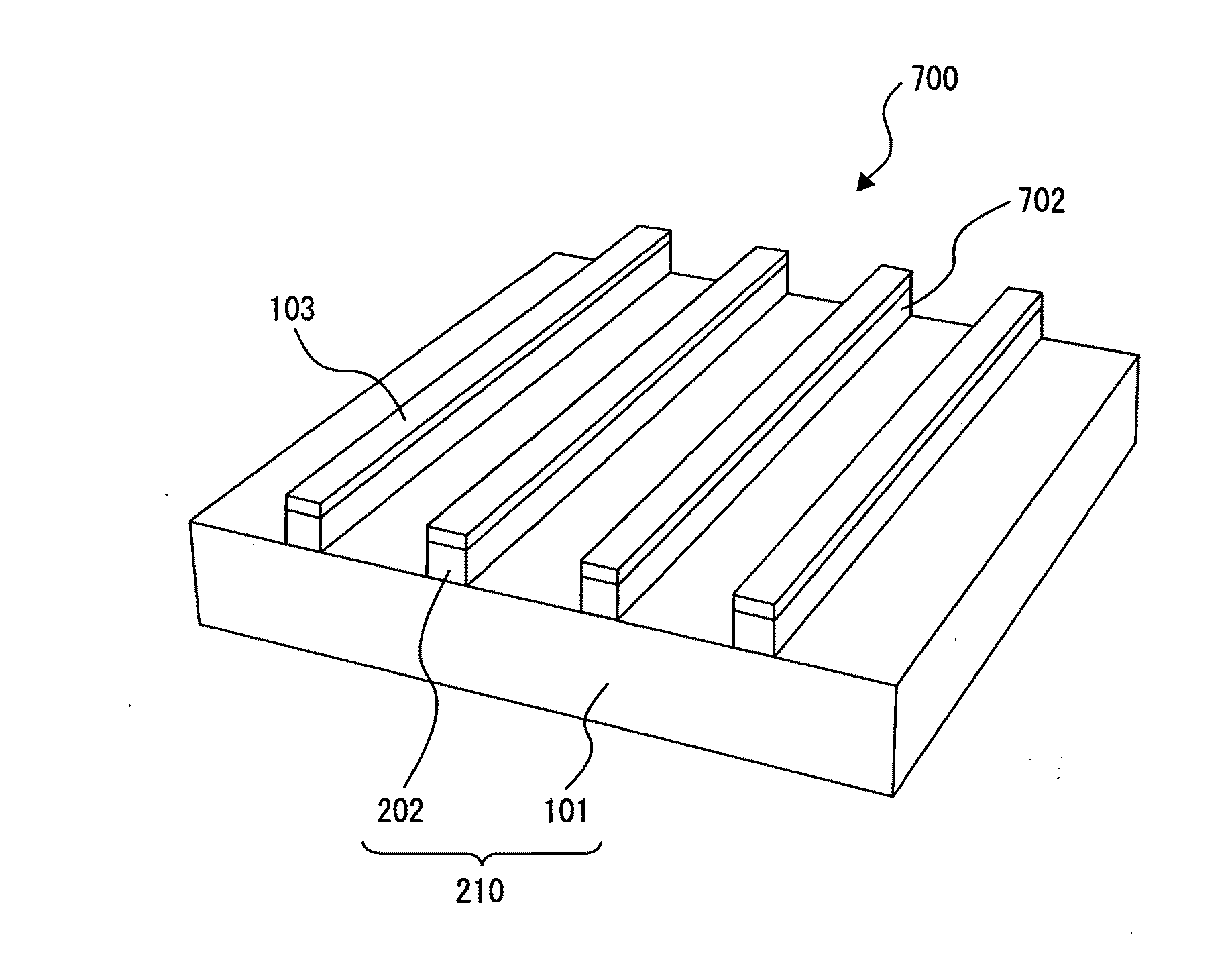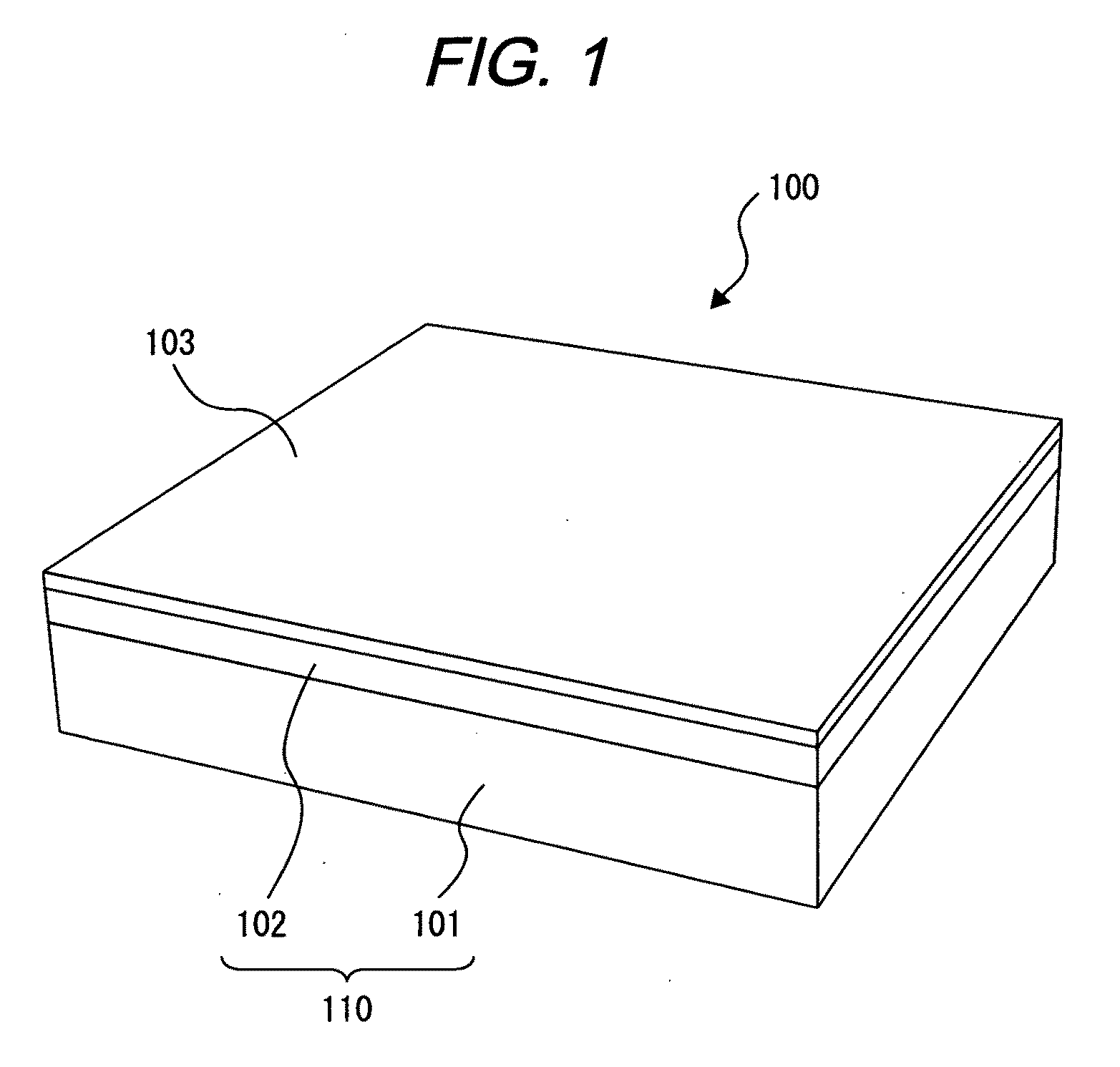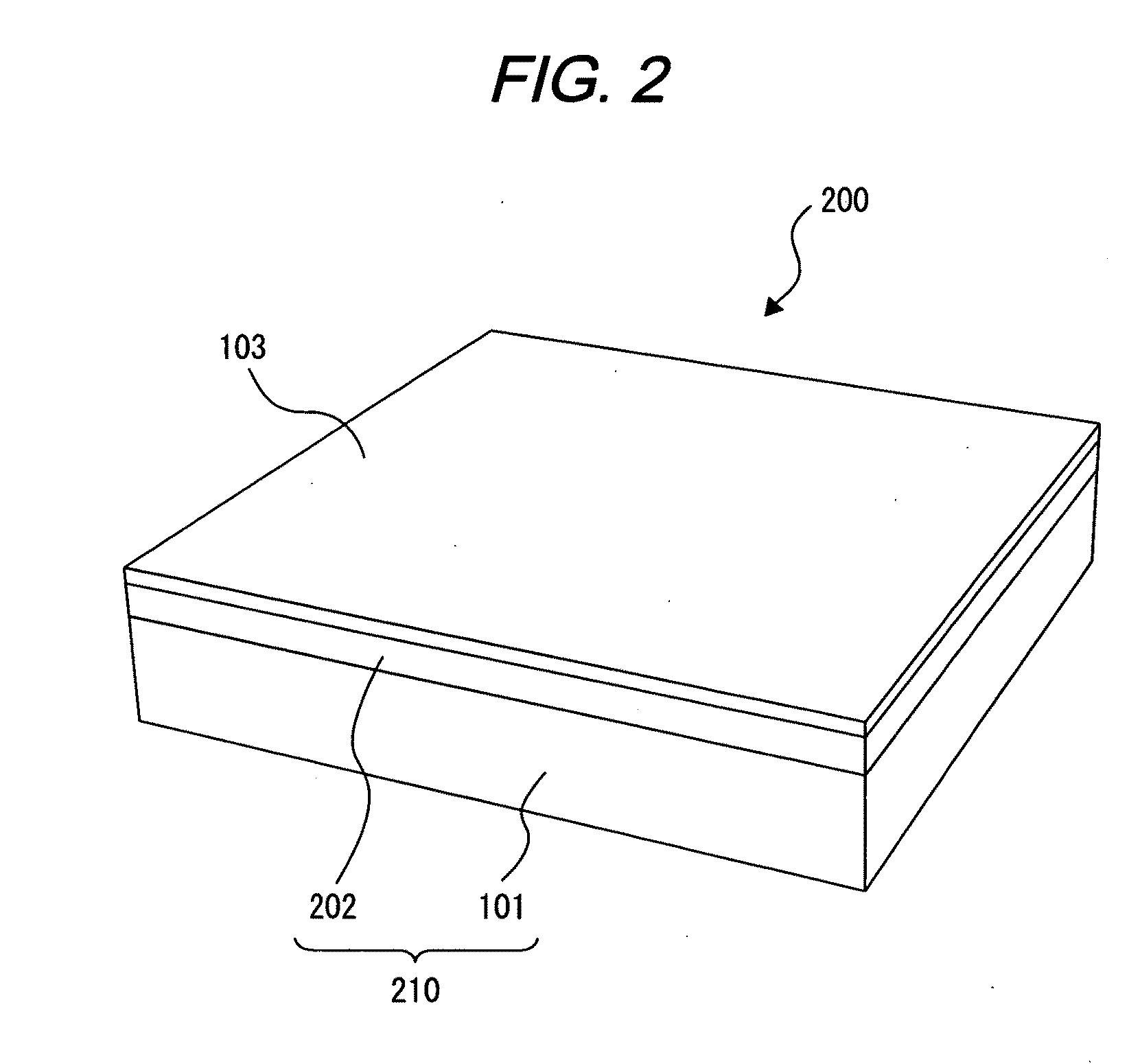Graphene grown substrate and electronic/photonic integrated circuits using same
a technology of graphene and substrate, which is applied in the direction of crystal growth process, crystal growth process, polycrystalline material growth, etc., can solve the problems of inconvenient industrial application, method has a manufacturing cost problem, and the type of substrate that can be used is limited, so as to achieve low cost
- Summary
- Abstract
- Description
- Claims
- Application Information
AI Technical Summary
Benefits of technology
Problems solved by technology
Method used
Image
Examples
first embodiment
of Present Invention
[0057]FIG. 1 is a schematic illustration showing a perspective view of an exemplary substrate having a graphene layer grown thereon according to a first embodiment of the present invention. First, an aluminum oxide (α-alumina, Al2O3) film 102 is formed on a single crystalline silicon substrate 101 by sputtering or the like. Thus, a substrate 110 having atomic layers of metal oxide on its surface is obtained. The aluminum oxide film 102 preferably has an average thickness of 10 nm or more and 500 nm or less. An average thickness less than 10 nm is undesirable for the following reason: The crystal grains of the polycrystalline aluminum oxide film 102 do not coalesce sufficiently at thicknesses less than 10 nm (for example, the aluminum oxide film 102 grows like islands). Thus, the surface coverage of the silicon substrate 101 with the aluminum oxide film 102 is insufficient, resulting in poor surface smoothness of the aluminum oxide film 102. On the other hand, an ...
second embodiment
of Present Invention
[0064]FIG. 2 is a schematic illustration showing a perspective view of an exemplary substrate having a graphene layer grown thereon according to a second embodiment of the present invention. First, a silicon oxide (SiO2) film 202 is formed on a single crystalline silicon substrate 101 by thermal oxidation or the like. Thus, a substrate 210 having atomic layers of metal oxide on its surface is obtained. The silicon oxide film 202 preferably has an average thickness of 10 to 500 nm. An average thickness of the polycrystalline silicon oxide film 202 less than 10 nm is undesirable because of local nonuniformity in the film thickness (i.e., poor surface smoothness). One reason for such thickness nonuniformity is the fact that island growth occurs during the initial growth stage of the silicon oxide film 202. On the other hand, an average thickness more than 500 nm is also undesirable because the resulting silicon oxide film 202 is prone to suffer from cracks caused by...
third embodiment
of Present Invention
[0067]FIG. 3 is a schematic illustration showing a perspective view of an exemplary substrate having a graphene layer grown thereon according to a third embodiment of the present invention. First, a mullite (3Al2O3.2SiO2) film 302 is formed on a single crystalline silicon substrate 101 by sputtering or the like. Thus, a substrate 310 having atomic layers of metal oxide on its surface is obtained. The mullite film 302 preferably has an average thickness of 10 to 500 nm. An average thickness less than 10 nm is undesirable because the grains of the polycrystalline mullite film 302 do not coalesce sufficiently resulting in poor surface coverage of the silicon substrate 101 with the mullite film 302. On the other hand, an average thickness more than 500 nm is also undesirable because the resulting mullite film 302 is prone to suffer from cracks caused by, e.g., thermal stresses undergone during subsequent processing, thus resulting in poor surface smoothness (as defin...
PUM
| Property | Measurement | Unit |
|---|---|---|
| surface roughness | aaaaa | aaaaa |
| surface height Rz | aaaaa | aaaaa |
| grain size | aaaaa | aaaaa |
Abstract
Description
Claims
Application Information
 Login to View More
Login to View More - R&D
- Intellectual Property
- Life Sciences
- Materials
- Tech Scout
- Unparalleled Data Quality
- Higher Quality Content
- 60% Fewer Hallucinations
Browse by: Latest US Patents, China's latest patents, Technical Efficacy Thesaurus, Application Domain, Technology Topic, Popular Technical Reports.
© 2025 PatSnap. All rights reserved.Legal|Privacy policy|Modern Slavery Act Transparency Statement|Sitemap|About US| Contact US: help@patsnap.com



